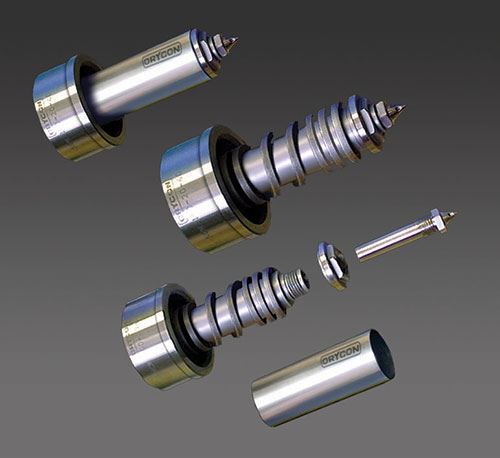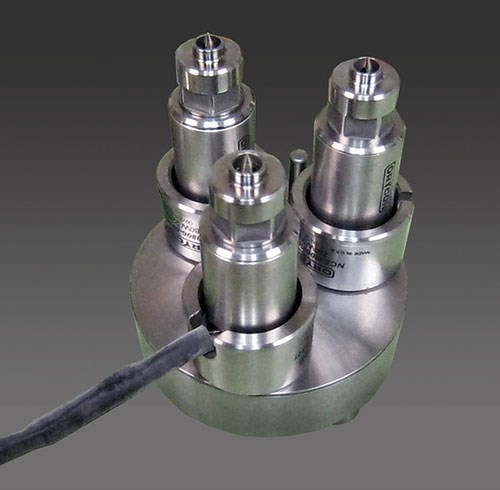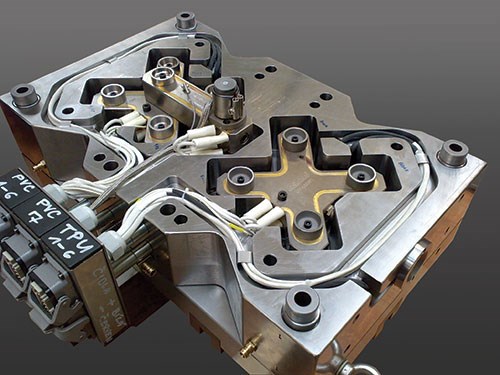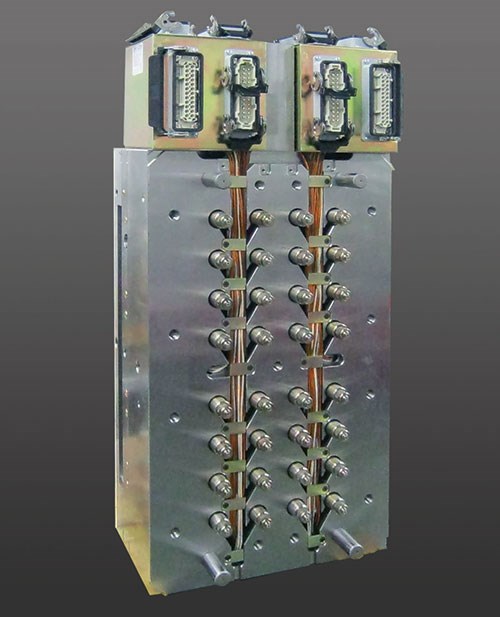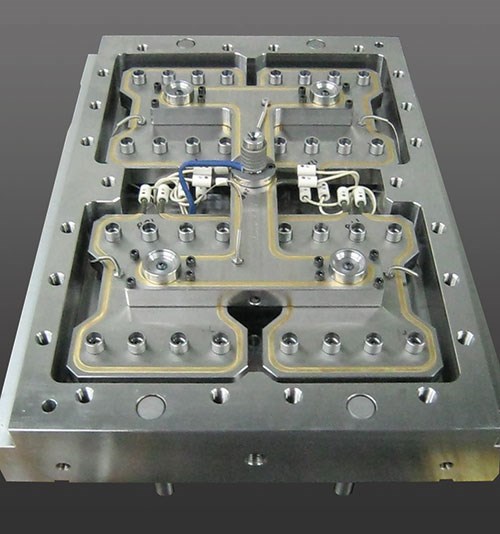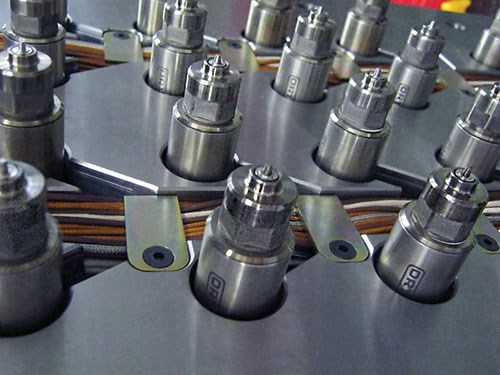Hot Runner Design Considerations
Evaluating system design can help avoid potential problems down the road.
Hot runner systems are such a common part of injection molds that hot runner suppliers must adjust component designs in order to meet increasingly stringent requirements in performance and materials, often adding to system complexity.
For instance, some designs use stepping motors to operate valve gates, others use special heaters, and still others require special tolerances in the mold for it to function properly. When selecting a hot runner system, however, keep in mind that, oftentimes, with each increase in complexity or sophistication, comes a decrease in utility that is not always obvious.
As you evaluate options for an appropriate hot runner system for your next job, consider every feature’s positive and negative aspects, and then carefully determine if the benefits outweigh the drawbacks.
For example, a special nozzle heater may be a good solution for stabilizing the nozzle’s heat profile (which otherwise may not work well with sensitive resins), but you also may face restricted availability, high cost, durability challenges, and difficult heater replacement. With a little investigation, you’d find out that the clearance between the nozzle body and the heater is prone to oxidation, which bonds the heater to the nozzle body and makes removal without damage almost impossible. If the chosen nozzle is the only type that will work with the required resin, the use of a special heater may be justified. However, if other nozzles fit the available mold space and can do the job without employing a special heater, then exposure to the drawbacks of such a heater would be unjustified.
The question is, how can one know about potential problems before they occur? The design looks sleek, the product data is appealing, and the manufacturing methods and materials used seem high-tech and sophisticated.
Hot Runner Design Evaluation
One way to avoid potential problems is to evaluate the design of a hot runner system in a critical but constructive way. Here are three basic hot runner design considerations:
1. Purity. Although innovation in design is very important, you need to consider its positive and negative effects on your specific application. A good rule of thumb is to keep it simple and direct. For example, use a direct approach to keep the manifold and nozzles at the desired temperature, and the plastic material flowing evenly. Over-simplified or over-designed system features could be signs of potential problems. The system’s design should have everything it needs and nothing more.
Possible red flags may include belabored heater design, heaters wound too tight, heaters with low contact area, heaters with wattage that is much higher or lower than comparable systems, the use of exotic metals, components/manifolds that are too thick or too thin, and features that appear unnecessary.
Let’s take a closer look at the use of exotic materials in hot runner component design. For example, nozzle tip shut-off rings made of titanium. At the design stage, titanium’s high strength and low heat-transfer rate may make it more desirable for the component than tool or stainless steel. However, the fact that titanium facilitates steam condensation might be overlooked. Moisture (due to weather or mold-cooling temperatures) can get into the manifold housing and condense around the tip’s shut-off area, remaining there at temperatures close to boiling point. Rust and corrosion can then develop within the highly precise fit area, and if the mold cavity is not made of stainless, the plastic can start to seep into the manifold-retaining cavity.
2. Practicality. The hot runner system should be easy to assemble into the molds without requiring special tolerances or tools. It should be responsive to the controls and able to maintain a stable processing temperature window that is close to the resin manufacturer’s specifications without using special controls or critical settings.
You can find tolerance requirements in the manufacturer’s system specifications or literature, but you also need to ensure that there are no tolerance restrictions in nozzle lengths. In addition, some systems shut off at the front of the nozzles, which means that the nozzles must be kept at a precise temperature while in operation. If they become overheated, they can expand enough to damage the cavity or system. While the main objective is always system performance, the hot runner design should also help reduce the probability of a system failure.
3. Ease of maintenance. Remember that someone has to work on it. Most hot runner systems are great when they work as intended, however, no system will work indefinitely without requiring some attention and maintenance. A seemingly unimportant component can stop working, and if not detected and addressed immediately, a small problem can quickly transform itself into a catastrophic failure.
A good way to reduce this probability is to reduce the number of parts in the system. Not an easy task to accomplish, but easy enough to notice during system evaluation. Easy accessibility to components and wiring is one of the most desirable hot runner assembly features, as is a design that allows nozzle heater and thermocouple replacement from the front of the plates without disassemby of the hot half.
Summary
Over the years, a number of hot runner manufacturers have developed systems that are practical, economical and durable, and that use replaceable components for easy maintenance. Some systems are better-suited for certain applications than others, but selecting the most appropriate system for the job is of vital importance to the mold designer, the moldmaker, the molder, the maintenance professional and, most of all, the owner of the mold. Educated and informed hot runner system selection will keep all parties smiling.
Related Content
Fundamentals of Designing the Optimal Cooling System
The right mold components can help improve mold cooling and thereby produce higher-quality parts.
Read MoreLaser Welding Versus Micro Welding
The latest battle in finely detailed restoration/repair of mold materials.
Read MoreMachining Center Spindles: What You Need to Know
Why and how to research spindle technology before purchasing a machining center.
Read MoreRead Next
How to Use Continuing Education to Remain Competitive in Moldmaking
Continued training helps moldmakers make tooling decisions and properly use the latest cutting tool to efficiently machine high-quality molds.
Read MoreReasons to Use Fiber Lasers for Mold Cleaning
Fiber lasers offer a simplicity, speed, control and portability, minimizing mold cleaning risks.
Read MoreAre You a Moldmaker Considering 3D Printing? Consider the 3D Printing Workshop at NPE2024
Presentations will cover 3D printing for mold tooling, material innovation, product development, bridge production and full-scale, high-volume additive manufacturing.
Read More
